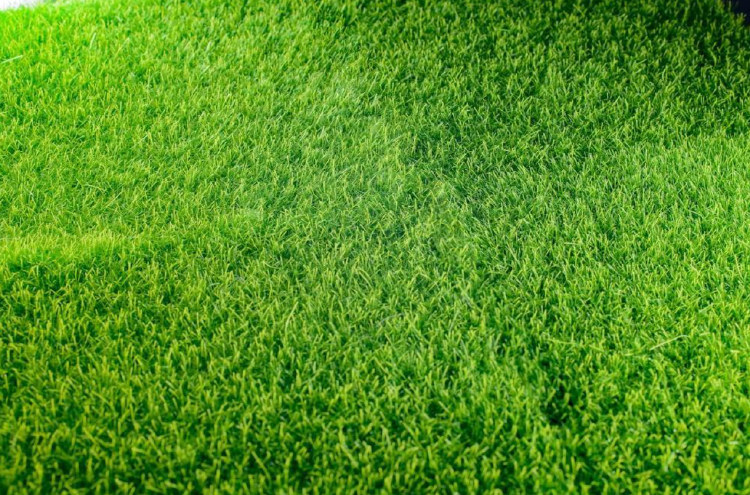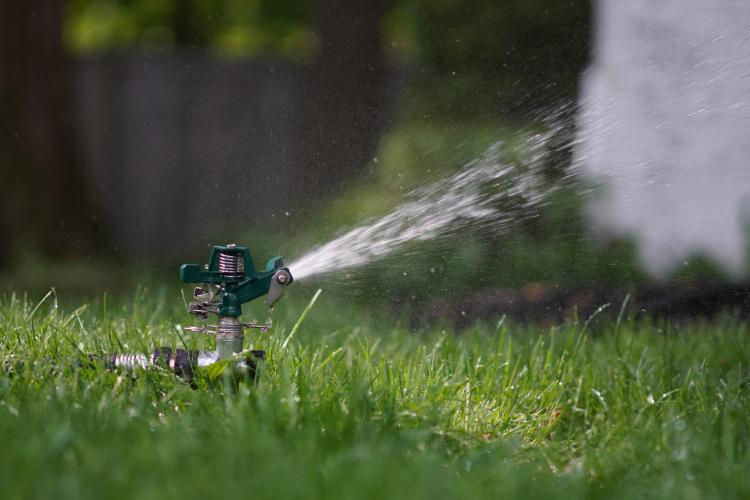
There’s really no substitute for a lush, green lawn. It makes your home feel more inviting and provides an awesome space for outdoor get-together. However, the forces of nature often conspire to disrupt the harmony of your lawn. Whether it’s springtime weeds, summertime heat, or some other factor, maintaining a healthy lawn takes effort and planning. Fortunately, it isn’t rocket science; once you get a feel for what makes your grass happy, it’ll seem like second nature.
Even if parts of your lawn are healthy, patches, where little to no grass is growing, can really spoil the effect. If you have extensive sections of lawn that need to be covered, you can find grass for sale from companies like The Grass Store. You can grow grass from seeds, of course, but having sod installed is a more foolproof way to get a perfectly smooth yard.

From backyard birthday parties to weekend barbeque, each time your lawn gets walked over means slightly more compacted soil. This makes it more difficult for the grass to breathe through its roots, let alone put down new ones. Compacted soil can result in slower growth, and less resilient grass overall.
The solution to this problem is to aerate the soil, through a process known as core aeration. Using a specially designed machine, small holes are punched into the soil to break up the compaction. This loosens the top layers of the dirt, gives the grass more room to grow, and makes it easier for water and fertilizer to soak into the soil.
If grubs are causing your grass to turn brown, nematodes are a natural way to fight them off. Nematodes are microscopic worms that happen to be the enemies of many grass-destroying pests; if you want to get rid of disease-causing insect invasions, you can ward them off using nematodes. Simply hire a certified technician to spray them on your lawn, and enjoy the rest of the year without worrying about insects turning your lawn brown.
Whether you have a sprinkler system set up, or you place sprinklers around the lawn yourself, it’s important to know how much water your grass is getting. For one thing, there’s no reason to run up the water bill any higher than it needs to be. More importantly, though, most lawn grasses don’t like to be over- or under-watered. For best results, they should get the recommended amount of water each week.
Assuming you know how much water your particular variety of lawn grass needs, the main thing to do is figure out how fast your sprinklers will disperse an inch of water. A rain gauge will do the trick, but you could even place a small container out on the lawn to collect water, marked to indicate one inch from the bottom. This allows you to accurately calculate how long to let the sprinklers run, giving your lawn the exact amount of water it needs to thrive.

Automatic sprinklers are often put on a certain schedule and then forgotten about, but this isn’t what will make your grass happy. Instead, you should adjust them periodically as the weather becomes hot or cold, dry or rainy.
Plus, it’s important to note that warm-season and cool-season grasses need different watering schedules. Many warm-season grasses only need to be watered once per week, while most cool-season grasses prefer multiple watering sessions each week.
Mowing the lawn isn’t that high on most people’s to-do lists, but if you want your yard to be at its healthiest, you may want to move that item up a few spaces. Why? Because the way a lot of people mow their lawns actually stresses the grass out. When grass is left to grow to several inches in height and then chopped down to the bare minimum, this is pretty hard to recover from. Growth is hindered, and the lawn might even be more susceptible to disease.
Instead, you should only cut about one-third of the lawn’s height at one time. So if your grass should be kept at 2 inches, you should mow it when it reaches 3 inches. The optimum height varies between grasses; warm-season turfs should be kept around 0.5 to 3 inches, while cool-season grasses should be kept around 1 to 4 inches.
There are all kinds of pests that can harm your lawn, from beetle grubs to armyworms to cutworms. If it turns out that you have an invasion on your hands, natural pesticides are one of the best ways to get rid of it. However, you should ensure that you’re using a pesticide that targets the specific pest you’re dealing with. Some of them are specifically formulated for certain pests, so it’s best to confirm which one is causing the problem before spraying.
Not only are natural pesticides better for the environment, but they’ll also let you and your family enjoy walking barefoot over that beautiful green grass more safely. However, even natural pesticides are usually toxic to humans at higher concentrations, so make sure you use the recommended forms of protection (such as gloves, masks, etc.) when applying them to your lawn.
Most people sharpen their mower blades about as often as they grease the hinges on the backyard fence, but this is actually an important detail in keeping a lawn healthy. Dull blades create rougher cuts, which stresses the grass out and makes it more vulnerable to disease. Sharp blades cut the grass cleanly, resulting in less harm to the lawn.
Everyone wants a lawn that’ll make all the neighbors jealous, but many of them don’t know how to get the desired results. By following these tips, you’ll have the kind of yard that will catch the eyes of everyone who passes by.
Leave in the comments your experience with your lawn, we would like to know everything about it! See you in the next article ;) You may be also interested in: Eco-Friendly Pest Control: 5 Top Products to Protect Your Plants